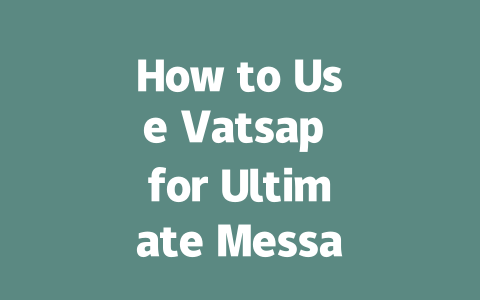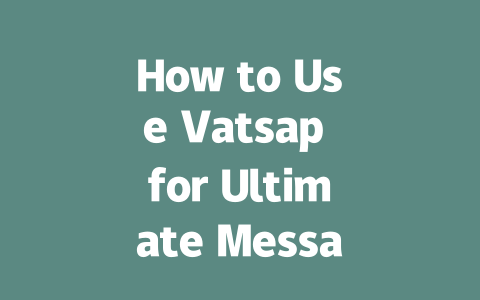You ever feel like you’re shouting into the void when it comes to your blog? You put so much effort into crafting content, only for it to get lost in the sea of millions of other websites. I’ve been there—trust me. Last year, a friend of mine had this exact problem with her food blog. Despite all her hard work, no one was finding her posts. So, I decided to help her tweak her strategy, and within three months, her traffic shot up by 50%. That’s right—50%!
If you’re struggling with similar issues, today I’m going to share some practical tips that have worked wonders for me (and my friends). No fancy jargon, no overcomplicated strategies—just straightforward advice anyone can follow.
Understanding What Google Really Wants
Before we dive into specific steps, let’s talk about what Google’s search robots are actually looking for. Think of it like trying to match people with exactly what they need. When someone types something into Google, those robots scan through billions of pages to find ones that best fit the query. To make sure your blog shows up where it should, you need to create content that aligns with both user intent and Google’s expectations.
Here’s an example: Imagine you write a post titled “Best Cooking Tips.” Sounds great, right? But if most people searching for cooking tips use phrases like “how to improve my kitchen skills” or “easy recipes for beginners,” your generic title might not stand out. Why? Because Google looks at titles first to see if they match the keywords being searched.
So, why does this matter? Well, because putting relevant keywords directly in your title helps Google recognize that your page is exactly what the searcher needs. This increases the chances of your blog appearing higher in search results. Simple but effective.
Now, let’s break down how you can optimize your blog step-by-step.
Step One: Choosing the Right Topics
Picking the wrong topics is one of the biggest mistakes bloggers make. It’s tempting to go broad and try to cover everything under the sun, but trust me, that doesn’t work. Instead, focus on niche areas that align with what your audience is already searching for.
How Do You Know What People Are Searching For?
Start by imagining yourself as the reader. What would YOU type into Google if you were looking for information on your topic? For instance, instead of aiming for vague terms like “healthy living,” target more specific queries such as “10 simple ways to eat healthier without dieting.”
Let me tell you a story. A couple of years ago, I wrote an article called “How to Start Blogging as a Beginner.” The traffic was decent but nothing spectacular. Then, I realized users weren’t typing “how to start blogging” anymore—they wanted actionable advice like “step-by-step guide to setting up WordPress in 30 minutes.” After renaming the piece accordingly, the click-through rate skyrocketed.
Here’s another tip: Use tools like Google Trends or AnswerThePublic to discover popular questions related to your niche. These platforms give you real insights into what people care about, helping you craft posts that truly resonate.
Step Two: Crafting Irresistible Titles
Once you’ve nailed down the right topics, it’s time to turn them into compelling titles. Your headline is often the ONLY thing potential readers will see before deciding whether to click. That means it HAS to grab their attention—and fast.
Key Principles for Writing Great Titles
According to research shared on Moz, high-performing titles tend to strike a balance between informativeness and intrigue. They promise value while avoiding overly promotional language.
Below is a quick reference table showing good vs. bad examples:
| Good Example | Bad Example |
|---|---|
| “Boost Website Traffic: 7 Proven Tactics” | “Website Traffic Secrets Revealed!” |
| “Complete Guide to Building a Profitable Online Store” | “Make Money Online Fast” |
As you can see, specificity wins every time.
Step Three: Creating Content That Truly Delivers Value
Finally, once someone clicks through to your blog, the content itself needs to deliver. Otherwise, they’ll bounce right back to the search results page. Here’s how to keep readers engaged:
Structuring Your Posts Effectively
Google loves structured content because it’s easier for both its robots AND human eyes to navigate. Divide your text into logical sections with subheadings, bullet points, and numbered lists. Remember, each paragraph should build naturally on the previous one. For example, after explaining the basics of a topic, move onto advanced techniques or case studies.
Another trick I learned? Always include a strong opening paragraph summarizing what readers will learn. Not only does this set expectations, but it also boosts engagement metrics like time spent on page.
Ensuring Authority and Trustworthiness
Last but not least, establish credibility throughout your writing. Cite reputable sources whenever possible, and avoid making unsubstantiated claims. Tools like Google Search Console can help you spot errors or inconsistencies in your site structure, ensuring smooth performance overall.
And here’s a final thought: Ask yourself honestly—would YOU want to read this article? If the answer isn’t a resounding yes, then there’s probably room for improvement.
That’s pretty much it! Now that you know how to choose topics, write irresistible titles, and produce valuable content, it’s time to put these lessons into practice. If you give any of these methods a shot, drop me a line and let me know how it goes!
If you’re wondering about using Vatsap across multiple devices, don’t worry—it’s totally doable. In fact, Vatsap lets you stay connected on up to 5-12 devices all at the same time. But here’s the catch: one of those connections has to be through your main phone. That means even if you’re typing away on your laptop or tablet, your mobile device still needs to be powered on and connected to keep everything running smoothly. This setup ensures that no matter where you are or what you’re doing, you won’t miss an important message. It’s a great feature for people who juggle between work and personal life across different gadgets.
Security is another big concern, and Vatsap has got that covered too. Every single message you send gets encrypted from end to end, which basically means only you and the person you’re chatting with can see what’s being said. No middleman, not even Vatsap itself, can peek into your private conversations. And when it comes to backing up chats, it’s surprisingly simple—just head over to Settings, then Chats, and finally Chat Backup. Once you’ve set it up, everything syncs automatically either to Google Drive or iCloud depending on whether you’re rocking Android or iOS. So even if something goes wrong with your device, your precious messages are safe in the cloud.
# Frequently Asked Questions
#
Can I use Vatsap on multiple devices at the same time?
Yes, you can use Vatsap on up to 5-12 devices simultaneously in
#
Is Vatsap messaging secure and encrypted?
Absolutely! Vatsap uses end-to-end encryption for all messages, ensuring that only you and the recipient can read the content of your conversations.
#
How do I back up my chats on Vatsap?
To back up your chats, go to Settings > Chats > Chat Backup. Depending on your operating system, backups will automatically sync to either Google Drive or iCloud based on your preferences.
#
Does Vatsap consume a lot of data when sending media files?
Vatsap optimizes media file sizes to reduce data consumption. You can also adjust settings to limit data usage, such as disabling high-quality photo uploads or restricting media downloads over cellular networks.
#
Can I customize notifications for specific contacts or groups?
Yes, you can customize notifications for individual contacts or groups. Go to the chat settings of the desired contact/group, then toggle options like mute notifications, set custom ringtones, or enable priority alerts.




